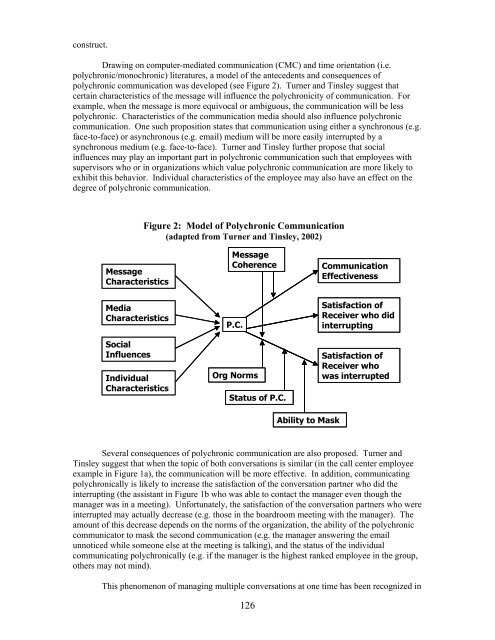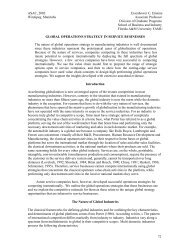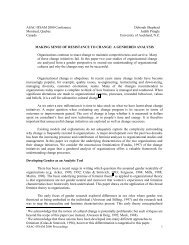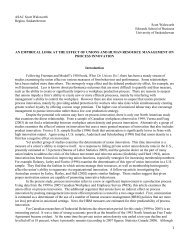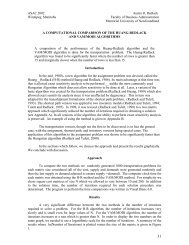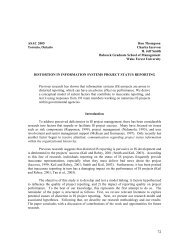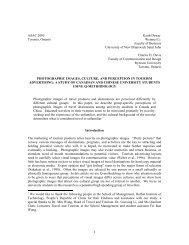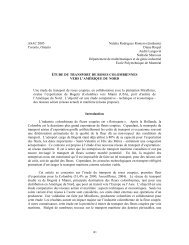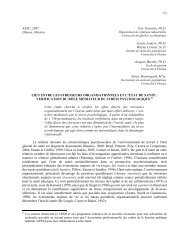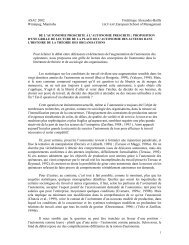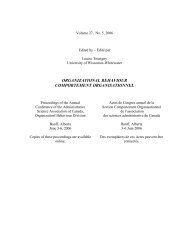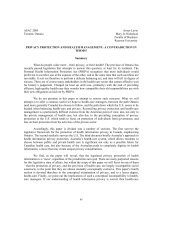Organizational Behaviour Comportement Organisationnel
Organizational Behaviour Comportement Organisationnel
Organizational Behaviour Comportement Organisationnel
You also want an ePaper? Increase the reach of your titles
YUMPU automatically turns print PDFs into web optimized ePapers that Google loves.
construct.Drawing on computer-mediated communication (CMC) and time orientation (i.e.polychronic/monochronic) literatures, a model of the antecedents and consequences ofpolychronic communication was developed (see Figure 2). Turner and Tinsley suggest thatcertain characteristics of the message will influence the polychronicity of communication. Forexample, when the message is more equivocal or ambiguous, the communication will be lesspolychronic. Characteristics of the communication media should also influence polychroniccommunication. One such proposition states that communication using either a synchronous (e.g.face-to-face) or asynchronous (e.g. email) medium will be more easily interrupted by asynchronous medium (e.g. face-to-face). Turner and Tinsley further propose that socialinfluences may play an important part in polychronic communication such that employees withsupervisors who or in organizations which value polychronic communication are more likely toexhibit this behavior. Individual characteristics of the employee may also have an effect on thedegree of polychronic communication.Figure 2: Model of Polychronic Communication(adapted from Turner and Tinsley, 2002)MessageCharacteristicsMessageCoherenceCommunicationEffectivenessMediaCharacteristicsSocialInfluencesIndividualCharacteristicsP.C.Org NormsStatus of P.C.Satisfaction ofReceiver who didinterruptingSatisfaction ofReceiver whowas interruptedAbility to MaskSeveral consequences of polychronic communication are also proposed. Turner andTinsley suggest that when the topic of both conversations is similar (in the call center employeeexample in Figure 1a), the communication will be more effective. In addition, communicatingpolychronically is likely to increase the satisfaction of the conversation partner who did theinterrupting (the assistant in Figure 1b who was able to contact the manager even though themanager was in a meeting). Unfortunately, the satisfaction of the conversation partners who wereinterrupted may actually decrease (e.g. those in the boardroom meeting with the manager). Theamount of this decrease depends on the norms of the organization, the ability of the polychroniccommunicator to mask the second communication (e.g. the manager answering the emailunnoticed while someone else at the meeting is talking), and the status of the individualcommunicating polychronically (e.g. if the manager is the highest ranked employee in the group,others may not mind).This phenomenon of managing multiple conversations at one time has been recognized in126


